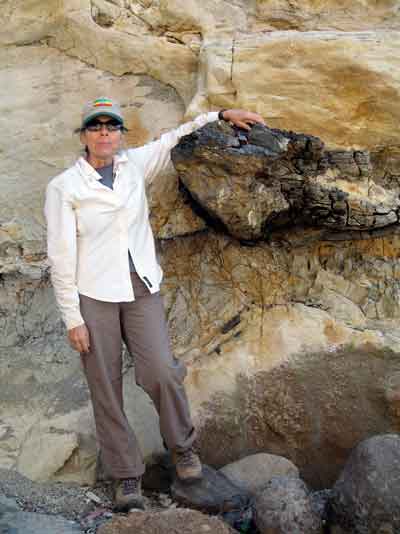Above: Roadside market in the fog, kombolcha, Ethiopia.
(By photographer Andarge Asfaw)
By Margaret Allen
Thirty million years ago, before Ethiopia’s mountainous highlands split and the Great Rift Valley formed, the tropical zone had warmer soil temperatures, higher rainfall and different atmospheric circulation patterns than it does today, according to new research of fossil soils found in the African nation.
Neil J. Tabor, associate professor of Earth Sciences at SMU and an expert in sedimentology and isotope geochemistry, calculated past climate using oxygen and hydrogen isotopes in minerals from fossil soils discovered in the highlands of northwest Ethiopia. The highlands represent the bulk of the mountains on the African continent.
Tabor’s research supplies a picture of the paleo landscape of Ethiopia that wasn’t previously known because the fossil record for the tropics has not been well established. The fossils were discovered in the grass-covered agricultural region known as Chilga, which was a forest in prehistoric times. Tabor’s research looked at soil fossils dating from 26.7 million to 32 million years ago.
Fossil plants and vertebrates in the Chilga Beds date from 26.7 million to 28.1 million years ago, Tabor says. From his examination, Tabor determined there was a lower and older layer of coal and underclay that was a poorly drained, swampy landscape dissected by well-drained Oxisol-forming uplands. A younger upper layer of the Chilga Beds consists of mudstones and sandstones in what was an open landscape dominated by braided, meandering fluvial stream systems.
Tabor is part of a multi-disciplinary team combining independent lines of evidence from various fossil and geochemical sources to reconstruct the prehistoric climate, landscape and ecosystems of Ethiopia, as well as Africa.
The project is funded with a three-year, $322,000 grant from the National Science Foundation. The team includes paleoanthropologists, paleobotanists and vertebrate paleontologists from the University of Texas at Austin, Miami University, Southern Methodist University, the Fort Worth Museum of Science and History, Washington University and the University of Michigan.
Tabor presented the research in a topical session at the Oct. 18-21 annual meeting of the Geological Society of America. The presentation was titled “Paleoenvironments of Upper Oligocene Strata, NW Ethiopian Plateau.” His co-researcher is John W. Kappelman, Department of Anthropology, University of Texas. — Margaret Allen
Source:7thspace.com
Ethiopian fossils define prehistoric ecosystems, human evolution,
climate change (By Margaret Allen/SMU)

Paleobotanist Bonnie Jacobs in Ethiopia.
For paleobotanist Bonnie Jacobs standing atop a mountain in the highlands of northwest Ethiopia, it’s as if she can see forever — or at least as far back as 30 million years ago.
Jacobs is part of an international team of researchers hunting scientific clues to Africa’s prehistoric ecosystems.
The researchers are among the first to combine independent lines of evidence from various fossil and geochemical sources to reconstruct the prehistoric climate, landscape and ecosystems of Ethiopia in particular, and tropical Africa in general for the time interval from 65 million years ago — when dinosaurs went extinct, to about 8 million years ago — when apes split from humans.